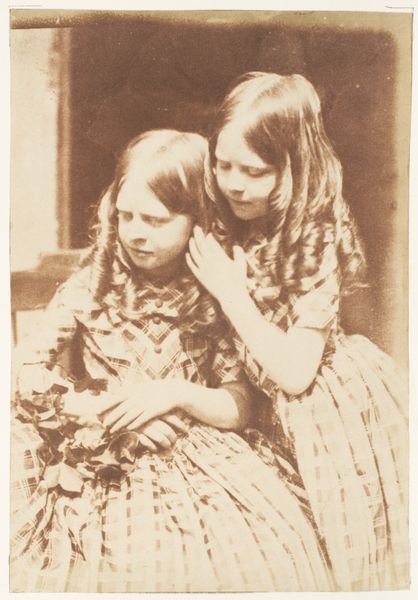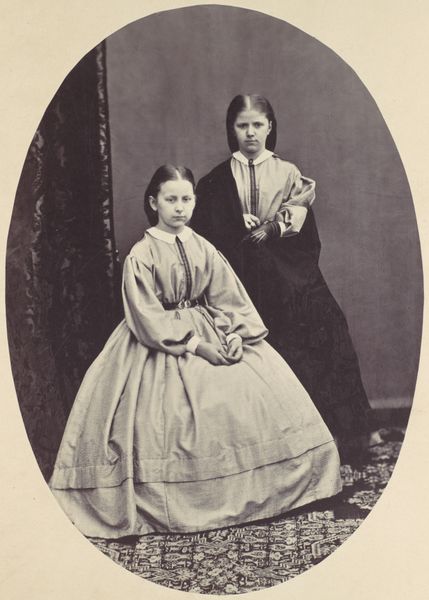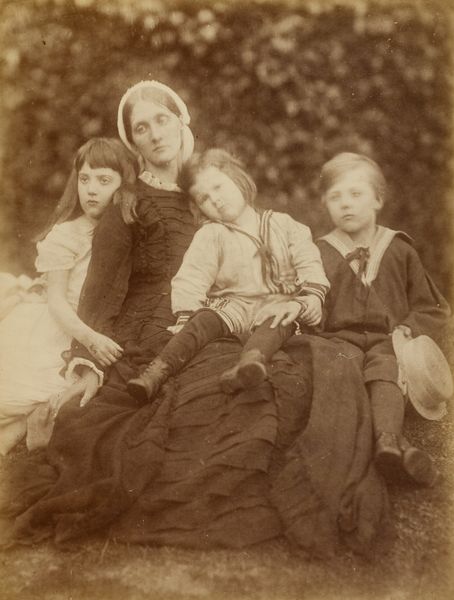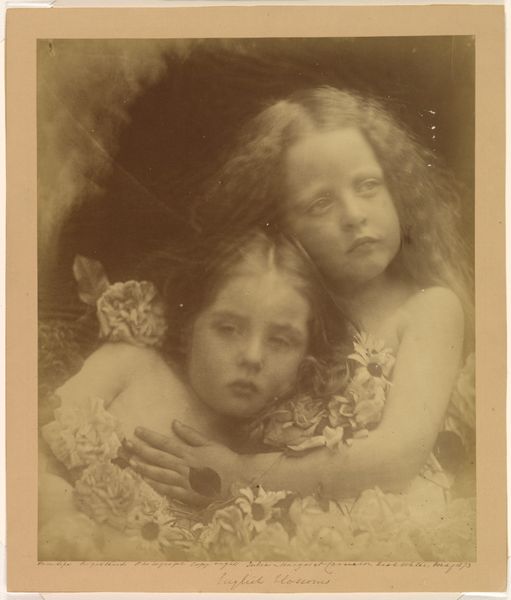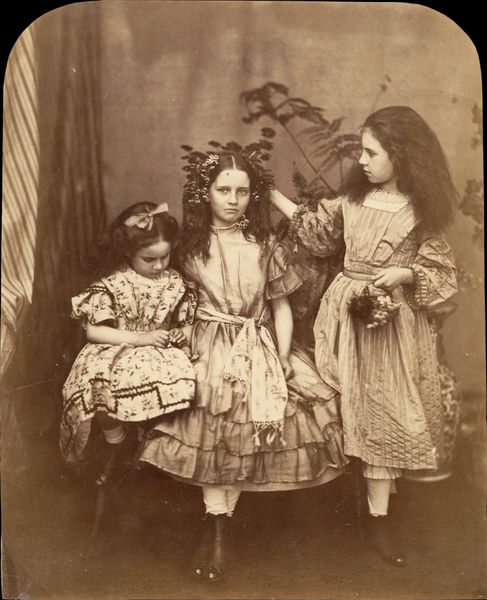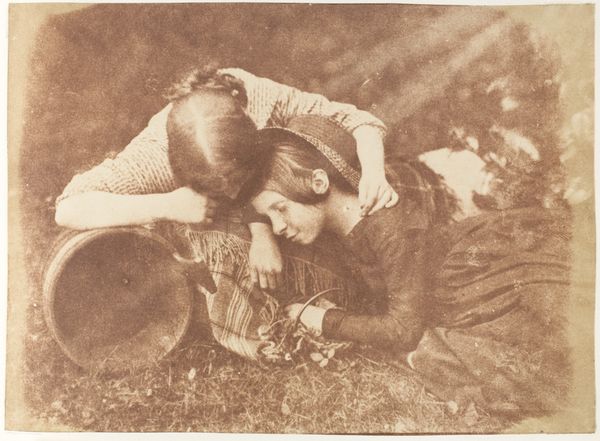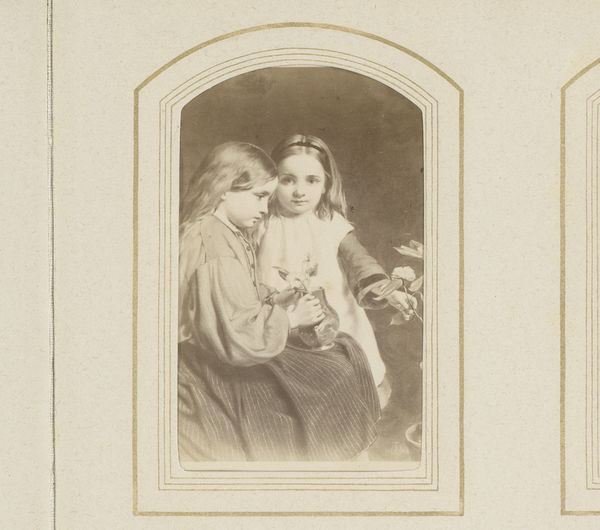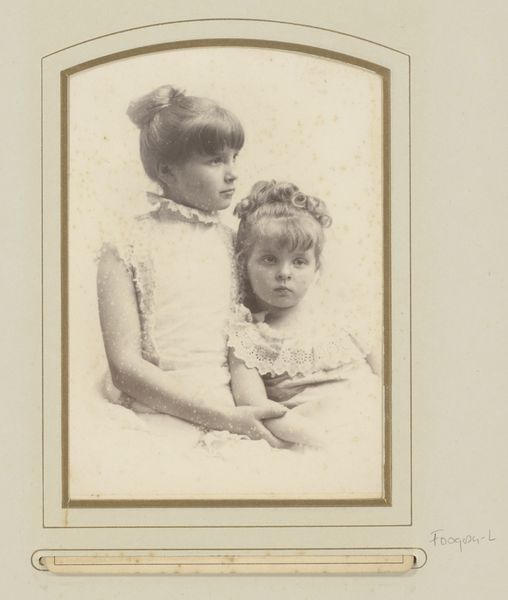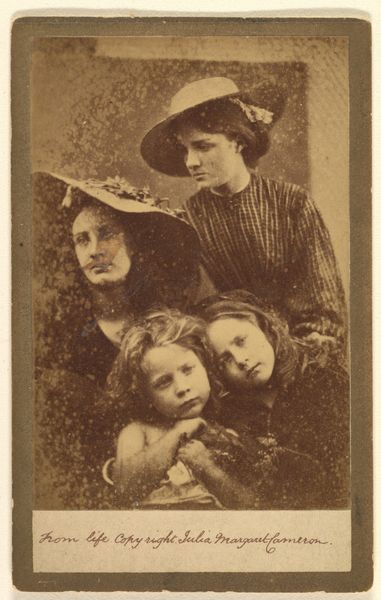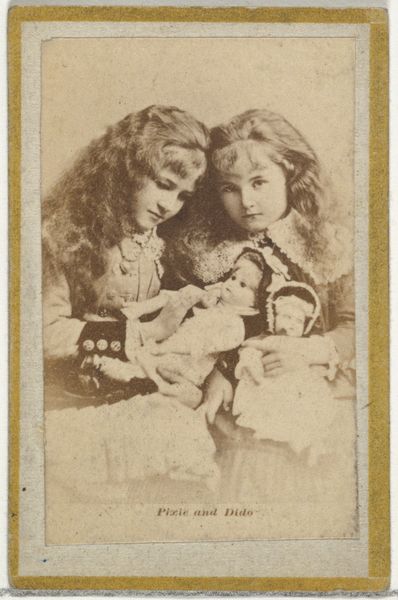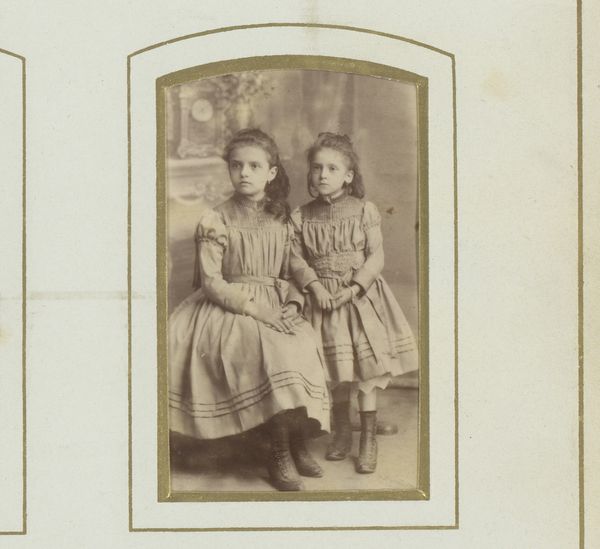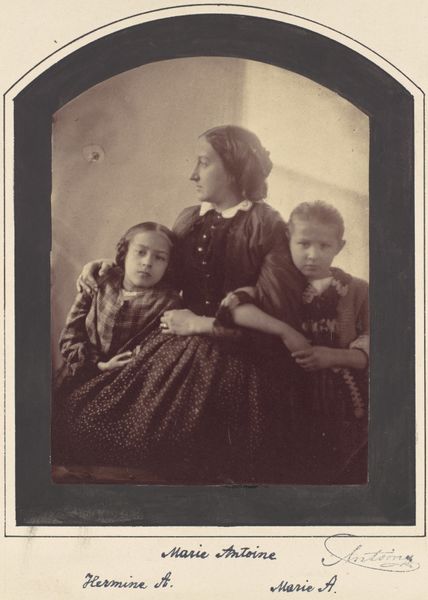
paper, photography
#
portrait
#
16_19th-century
#
paper
#
photography
#
group-portraits
#
romanticism
#
portrait art
Dimensions: 19.9 × 14 cm
Copyright: Public Domain
Curator: The photograph before us, titled "The Misses Grierson," was created around 1845 by David Octavius Hill, working on paper with early photographic techniques. You can currently find this arresting portrait right here at the Art Institute of Chicago. Editor: What strikes me first is how… intimate it feels, almost like glimpsing a secret moment. There’s a protectiveness evident, and a deep pensiveness hanging over the composition like mist. Is it just me, or does that sepia tone make everything feel heavier, yet softer somehow? Curator: The intimacy resonates, doesn’t it? Group portraits, especially those depicting children, frequently tapped into sentimental ideals during that period. The close proximity signals sisterhood and emphasizes a shared emotional world. This, coupled with Romanticism's influence, makes us wonder what's weighing on them. Are they reflecting inner landscapes or confronting something real? Editor: Right. And visually, there’s something hypnotic about those flowing curls and those checkered dresses. They’re mirroring each other almost like dolls. I can’t tell if it’s reassuring or mildly unsettling! I mean, look at how their hands clasp and one sister rests a hand on the other as though transferring emotion... or, dare I say it, burden? Curator: Fascinating. That shared emotionality you pinpoint can be viewed through the lens of symbolic gestures of affection and support. Their hands are central, suggesting comfort in vulnerability. The details of dress—checkered—reflect the period's attire, while allude also visually to constraints on women's lives, regulated to the finest detail. Editor: A touch heavy, sure. And their youth is also starker to me for some reason in that very aesthetic that makes them look timeless. Do you think, despite the possible melancholy of this, that Hill meant for us to be looking into this feeling in them, into this weight, as if through the eyes of an elder looking back at this very portrait itself years from the day of its photograph being taken? Curator: Interesting idea—that notion of retrospection is not unreasonable at all. I think he captured an ephemeral vulnerability, and as such, this vulnerability continues to linger now in front of our eyes. Editor: Yes! Precisely what I got here today! A lasting effect.
Comments
No comments
Be the first to comment and join the conversation on the ultimate creative platform.
